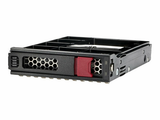Types of Storage Drives & Their Uses
In a world where everything is done on the virtual platform, from business transactions to personal archives, the significance of data cannot be undermined. This equates to the increasing value of storage drives for computers.
These storage drives come in many forms and designed to cater to specific storage tasks. Nonetheless, they serve the same purpose and that is to hold data or information whether temporarily or permanently.
By definition, a storage drive is computer hardware that stores and retrieves data either in a real-time setting or for longer archiving.
Primary VS Secondary Storage Drives
When it comes to computer storage drives, you can basically place them into two categories: the primary storage drive and the secondary storage drive.
RAM or random-access memory is classified as a primary storage drive. It is an essential component of PCs, tablets, and smartphones responsible for the short-term memory that employs higher speed compared to other forms of storage drives.
Meanwhile, an example of a secondary storage drive is the hard disk drive (HDD) or hard drive as it is commonly known. Secondary storage drives hold data that are kept permanently or for an extended period of time until it is overwritten or deleted for good. HDDs and other drives under this category often have the ability to save data when the power is turned off as opposed to a primary data which simply stores data temporarily, hence, lacking the ability to retrieve lost data.
Storage Drives for Permanent Data
While RAM and other primary storage drives are valuable enough on their own merit, we are going to focus on the storage drives responsible for keeping data for the long-term. That is to say, we are going to explore the different types of secondary data storage drives and their uses.
HDD
Hard disk drives (HDD) used mechanical magnetic platters to store data which includes but not limited to the operating systems, media files, and software applications. It exhibits a rotating pattern arranged in sectors within tracks wherein data is written through moving read/write heads.
There are different types of HDDs based on the interface it uses such as the PATA (Parallel Advanced Technology Attachment), Serial ATA (SATA), and SCSI (Small Computer System Interface).
Common Uses
desktop computers
laptop computers
servers
mainframes
backup external drives
SSD
Solid-state drives (SDD) is a storage drive that uses NAND flash memory chip and flash controller instead of mechanical parts used by HDDs. This gives SDDs an advantage in speed as it acquires immediate access to data.
The high read and write performance of SDD entails that it can also be significantly expensive compared to HDDs. Most experienced users prefer SSD for their operating system and HDDs to store media files and documents that do not necessarily require high speed. SSDs are also efficient in business operations and gaming.
Common Uses
HD cameras
Portable drives
Servers
Smartphones
Smart Wearable
Tablet computers
Flash Drive
A flash drive or sometimes called a thumb drive it resembles a human thumb in size stores data and subsequently connects for transfer through a computer’s USB port.
Unlike HDDs, a flash drive does not necessarily contain movable parts. Instead, it has an integrated circuit memory chip for data storage. It is similar to the SSD in the sense that it utilizes flash storage. However, it has lower flash memory which means that its performance is significantly lower compared to that of the SSD.
Nonetheless, with the intended purpose and general design of flash drives, it does not necessarily have to be at par with SSDs or even HDDs. Flash drives are used primarily to store data, create back up, and to copy and transfer data from one source to another. The portability, size, and small capacity of flash drives make them necessary for storing copies of vital files that can get lost during extreme computer damages.
Common Uses
Audio players
Booting operation systems
Computer forensics
Data transfer
USB memory sticks
SD Card
A secure digital card or SD card also uses flash memory to store data similar to a flash drive. It is tiny storage drive that comes with different types according to physical dimensions: SD (32mm X 24 mm x 2.1 mm); MiniSD (21.5 mm x 20 mm x 1.4 mm); and MicroSD (15 mm x 11 mm x 1.0 mm).
SD cards require a card reader to enable reading and writing when connected to a computer. However, not all computers are equipped with a built-in memory reader. Hence, it uses external connectors depending on which type of drive it is embedded.
Common Uses
Audio players
Digital cameras
Handheld computers
Mobile phones
Video camcorders
Recent Posts
-
Where Legacy Bays Meet Lightning Speed: The HPE 960GB LFF SATA Mixed Use SSD Built for ProLiant Gen9 and Gen10 Servers
Power and Reliability in Enterprise Storage: HPE 960GB LFF SATA Mixed Use SSD for ProLiant Gen9 and …Dec 14th 2025 -
Solid Confidence in Every Byte: Powering ProLiant Gen10 and Gen10 Plus Servers with the HPE 960GB LFF Value SAS SSD
HPE 960GB 3.5-inch LFF Digitally Signed Firmware SAS-12Gbps Mixed Use Value SAS Multi Vendor SSD for …Dec 13th 2025 -
Where Reliability Meets Everyday Speed: Empowering ProLiant Gen9 and Gen10 Servers with the HPE 960GB LFF SATA Mixed Use SSD
HPE 960GB 3.5-inch LFF Digitally Signed Firmware SATA-6Gbps Mixed Use SSD for ProLiant Gen9 and Gen1 …Dec 12th 2025




